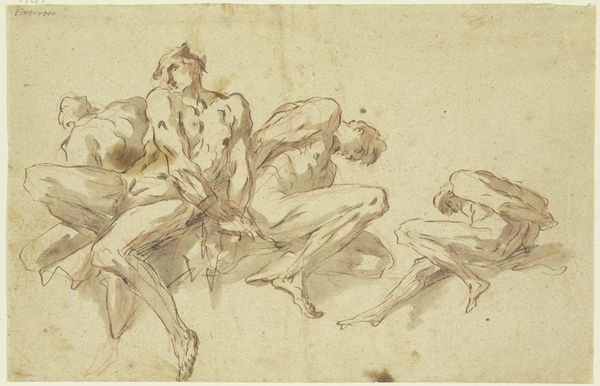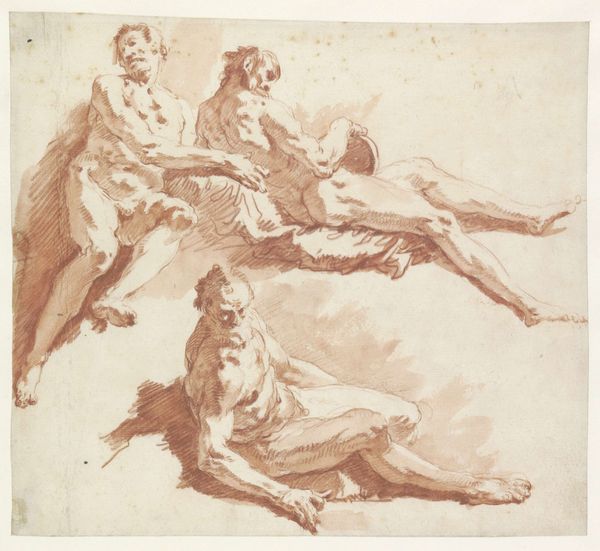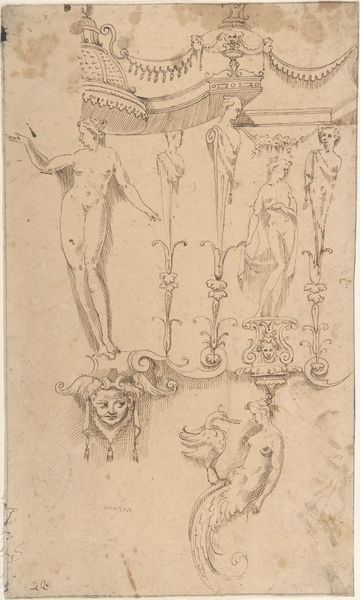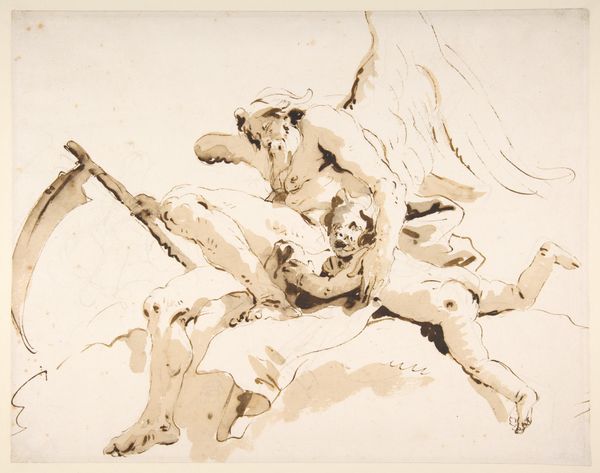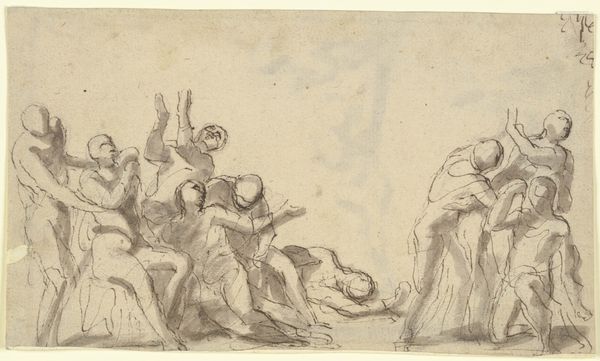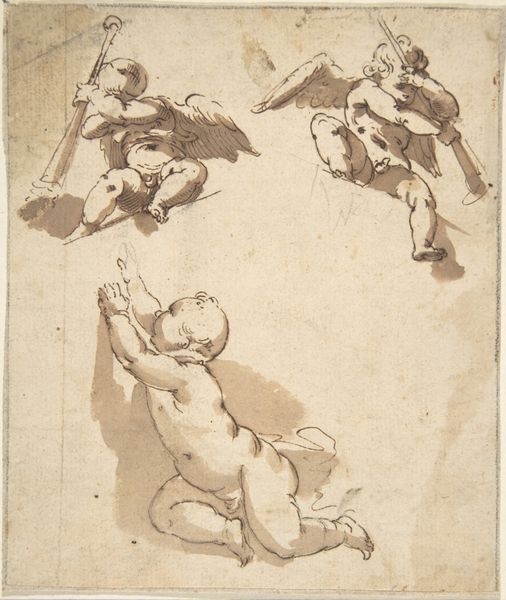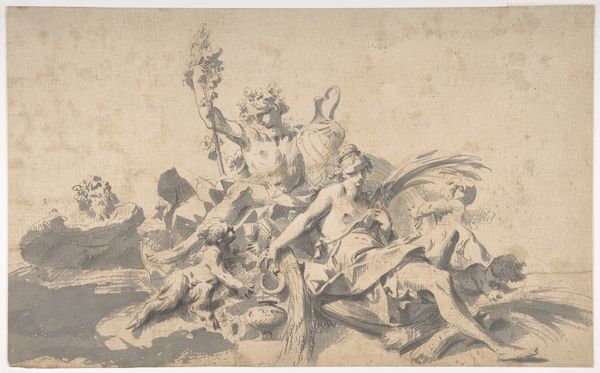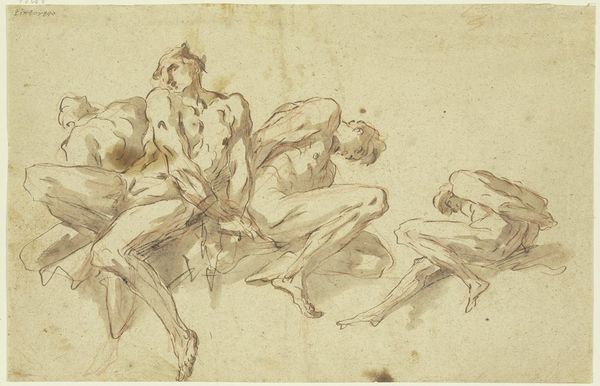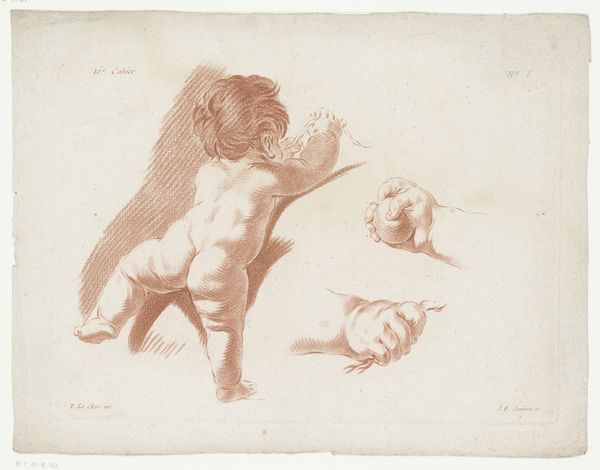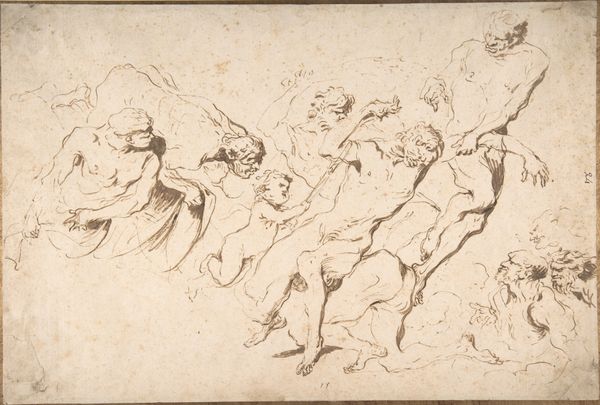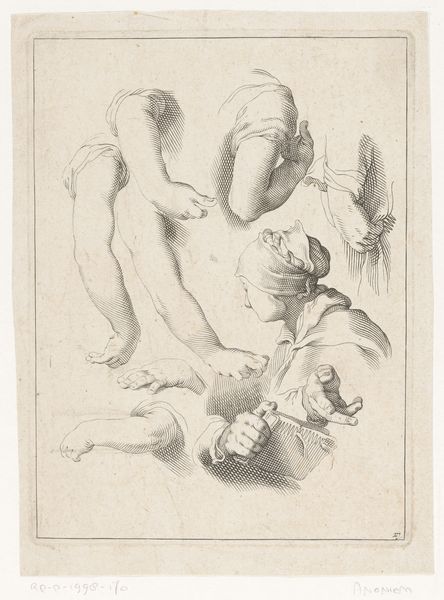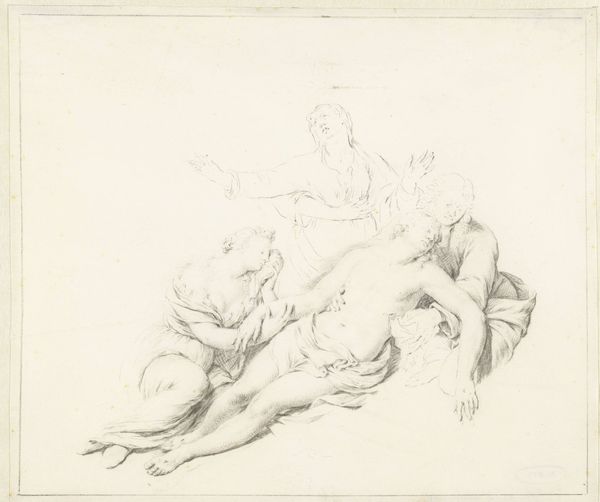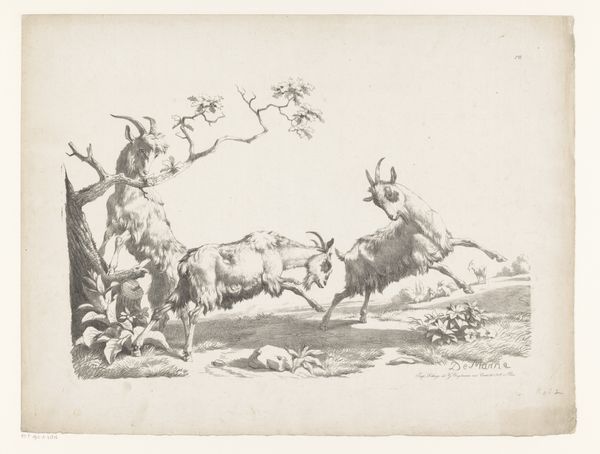
Time Seated, with Two Attendant Figures 1696 - 1770
0:00
0:00
drawing, print, ink
#
drawing
#
allegory
#
baroque
# print
#
figuration
#
ink
#
history-painting
#
italian-renaissance
#
nude
Dimensions: 9-3/4 x 13-15/16 in. (24.7 x 35.4 cm)
Copyright: Public Domain
Curator: It has such an ethereal feel, like a half-remembered dream. Editor: This ink drawing, "Time Seated, with Two Attendant Figures," is attributed to Giovanni Battista Tiepolo, and dates sometime between 1696 and 1770, a tumultuous time of Enlightenment and revolution. It’s a fantastic example of baroque allegory. Curator: Definitely feels like that period – there’s such a strong sense of drama and the symbolic weight is palpable. Who are these figures? Editor: On the left we see a winged, bearded figure, presumably Father Time himself, with his traditional scythe. The figure next to him is much younger and points authoritatively. Behind him there appears to be a slumped, nearly prostrate figure. Curator: Time, Youth, and... is that a figure of Exhaustion or Defeat? Time is often linked to themes of mortality, wisdom, destruction, and change. So it's striking to see youth positioned so centrally, seeming to direct it all. The gesture, almost a command, has real power. I wonder, what anxieties about progress and destiny was Tiepolo trying to convey through such clear symbology? Editor: Anxieties, yes, especially considering the social upheaval of the era. History was being made – or unmade – at a rapid pace. The prostrate figure interests me most – is this history itself? Powerless before the march of time and direction from Youth? Perhaps Tiepolo comments on leadership of the time? Curator: A fascinating question. Thinking of symbols as a form of cultural memory, that slumped figure evokes everything lost or discarded. Each choice, each artistic liberty is embedded with cultural and personal meaning to viewers. It's like the past whispering just beyond our comprehension. Editor: I agree, art objects allow us this dialogue through history. We get to witness perspectives, engage, re-interpret. And it is that action, a form of cultural contribution, that helps to shape the course of human experience and values. Curator: Precisely. It invites us to not just passively observe history, but to interrogate the symbols, engage with our anxieties, and really try to see ourselves reflected in that eternal flow of time.
Comments
No comments
Be the first to comment and join the conversation on the ultimate creative platform.
